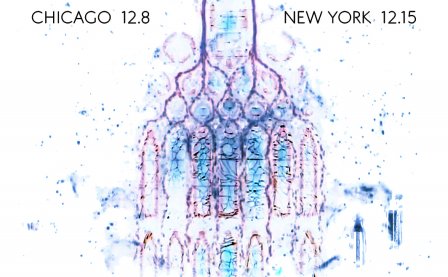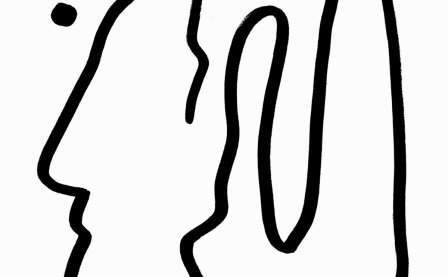As I prepared to write about Christina Vantzou’s debut solo album, Nº1, I was genuinely surprised (and embarrassed) to have ‘discovered’ her already-existing body of work. Although I had been exposed, years ago, to her first collaboration with Adam Wiltzie, The Dead Texan, I had not bothered to internalize her name: Christina Vantzou. Nor had I done so as I watched her videos for Dustin O’Halloran’s and A Winged Victory for the Sullen’s compositions on YouTube. Nor had I done so as I pondered A Winged Victory for the Sullen’s album art while preparing a recent review of the same album. Indeed, she has been present, in some respect, in my listening and viewing habits over the last several years, and I didn’t even know it.
Even so, as I was listening to Nº1, I was unsurprised to discover than Vantzou works as a visual artist. In fact, I was disappointed (I’m sorry) that our promo did not include the film pieces that were made, incidentally or actually, to accompany each track. Her YouTube Channel, as of today, offers two, “Homemade Mountains” and “Prelude for Juan,” the first and second tracks of Nº1, respectively. They show contours and dark centers, careful shifts of color and temperatures that, yes, come into and out of focus. Ambient music, notoriously, gives itself to the listener without force. It hangs in the air. It presents the coffee. It doesn’t interrupt. It gives itself over to wandering thoughts and imagined projections. But Vantzou provides us with images beyond our own making, and I believe any review that doesn’t take into account the entirety of the project remains incomplete. As I felt myself searching for emotional resonances or mere movements within the compositions themselves, I often found myself at a loss. And yet, accompanied by Vantzou’s films, the compositions are given a completeness not otherwise realized through the music alone.
I found that much of Nº1 was bound by its lack. Individual compositions flow in and out of each other without notable definition or drama, although the components are often quite beautiful. Performed by Vantzou and seven-piece ensemble Magik*Magik, the album is made up of gorgeous moments: in particular, lush, droning violins and Vantzou’s voice awash in echo. Part acoustic, part electronic. Moments, however, can give false impressions, as the compositions often came across as slight meditations. Typically alternating between two drones, without noticeable alteration in either key, tempo, or mood, the album tends to meander along — at times, it seems, aimlessly. So much is mere prelude or interlude, a preface or a time to divert focus. (Perhaps this is simply the genre’s role: to occupy, utterly, without force. But sometimes I wish it would cease to be like the passive-aggressive relative who actually has something worthwhile to offer and forcefully give us what they had wished to all along. Or maybe I’m just impatient.) And yet there are moments that suggest that Vantzou is doing exactly what she should be doing as a composer: both parts of “Super Interlude” work magnificently, and “Joggers” is a quietly gorgeous closing track. And accompanied by their visuals, “Homemade Mountains” and “Prelude for Juan” are given a shape I initially thought was lacking. (Again, I suspect this may be true for other tracks.)
For three years, Christina Vantzou made Nº1, in sketches and by ear, with her voice, a synthesizer, and a library of samples. Despite my disparaging words, the labor shows. Furthermore, I sense something in Christina Vantzou’s broader, multimedia compositional project, the future of the realization of the genre itself. (Or, if nothing else, a hint at the multi-skilled artist’s broader abilities and vision.) Considering all that Nº1 is aurally and visually, it is an excellent beginning, and her’s is a name I will keep in my memory.
More about: Christina Vantzou




